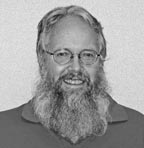Historic 1927 Winter Wildfire
Current drought conditions have made our hills drier than they have been in decades. Our “normal” fire season, typically summer and fall, is now year-round, and even this winter may see some big wildfires.

president of the Historical Society
of the Crescenta Valley and loves local history. Reach him at
lawlerdad@yahoo.com.
But we have had major conflagrations outside of our normal fire season in the past. In the winter of 1927 we had five major wildfires erupt in a short period, Dec. 4 through Dec. 7, creating a regional emergency that pulled in resources from all over the western states. Fires ignited almost simultaneously in the Mt. Baldy area, Saugus, Palm Springs and Big Bear. But the largest and most destructive fire began in the Crescenta Valley and burned the entire Verdugo Mountain range on both sides, and from end to end. For several days literally thousands of firefighters were deployed, many of them just grabbed off the street and press-ganged into fireman roles. In just four days, hundreds of homes were destroyed in those five fires, and 40,000 acres of land was scorched.
The worst of the five, the Verdugo Hills Fire, was started when a La Cañada resident was burning brush on a lot he owned in La Crescenta. It was winter, he had a permit to burn brush, and he was careful to make sure the fire was out when he left his lot above Foothill Boulevard on the morning of Dec. 3. But that afternoon a Santa Ana blew in, and some unseen buried ember must have taken flight into the brush. By 5 o’clock, a roaring blaze was being pushed by increasing winds through the sagebrush toward Foothill above Highway Highlands. (Highway Highlands was then an isolated development between Dunsmore and Boston avenues.) The Highway Highlands residents evacuated east to La Crescenta and a fire line was set on Foothill. The wind-driven flames leaped over the firefighters on Foothill, skirted Highway Highlands, burning just a couple of homes, and within minutes had reached another hastily assembled fire line on Honolulu Avenue. Leaping that line as well, the fire continued its march down the hill, soon reaching the Verdugo Mountains. On the morning of the 4th, the wildfire was spreading both east and west across the face of the Verdugos. By nightfall, hundreds of men fought to stop the western front at La Tuna Canyon, while on the eastern front 300 men stopped the advance in Deer Canyon, just a half-mile from the Oakmont Country Club. With the four other major fires blazing, hundreds of firemen were now streaming into the area from all over Southern California, swelling their ranks to several thousand, and calls for help were being broadcast as far away as San Francisco and Salt Lake City.
Back in the Verdugos the fire had crested the hill and was headed downhill fast towards Glendale and Burbank. On the Glendale side, firefighters were able to stop the fire just above the Brand estate, but on the Burbank side the fire was unstoppable. Burbank residents began to pile belonging into their cars, which were left running in driveways for a quick get away. The fire roared down Stough Canyon and steep Sunset Canyon, where 112 homes and a country club had been built, catching many residents unaware. One resident, trapped in his house by surrounding flames, crawled beneath the inferno on his hands and knees for a mile to safety. Another vainly tried to save the clubhouse. Seeing his peril he jumped in his car and sped down the canyon just ahead of the racing fire. His car missed a curve and flipped, then ignited as the fire caught it. Brave firemen rushed the inferno, and pulled the burned and broken survivor from the wreckage. Before the fire was stopped at the base of Sunset Canyon, nearly 100 homes were lost.
By Dec. 7 all five fires were out, and firefighters returned home to grateful communities. Grauman’s Chinese Theater even put on a free show for the firemen. Although there had been scores of serious injuries, amazingly no one was killed. It had been an intense four days for Los Angeles, during a time of year when fires weren’t supposed to happen.
